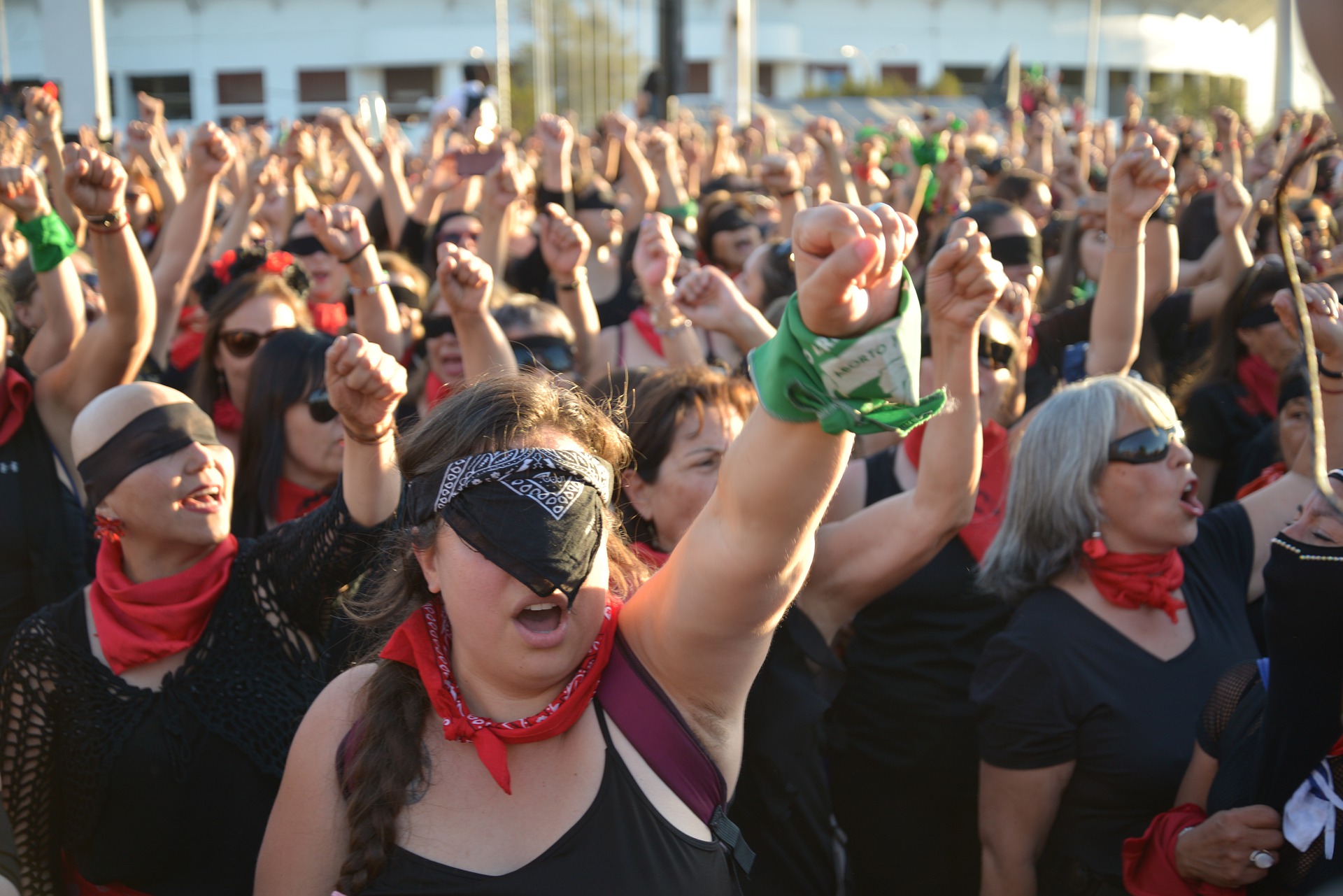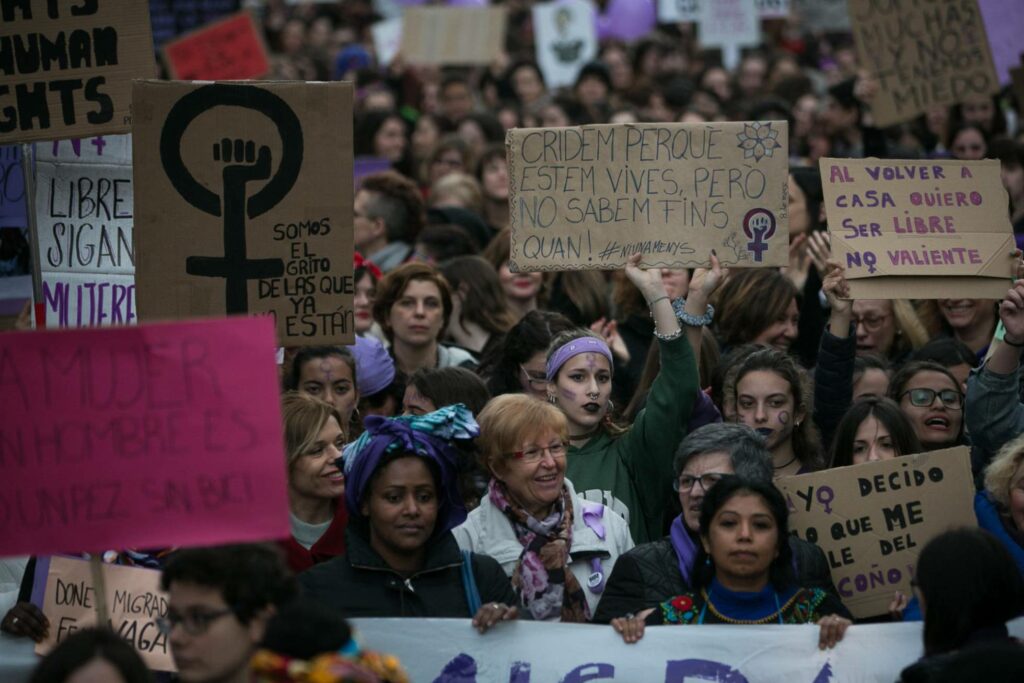
Brief description
This Is a theoretical workshop on feminist and anti-racist pedagogy. This workshop will try to get participants to “embody” the theoretical foundations of a feminist and anti-racist pedagogy, based on different resources (academic and non-academic) of knowledge in this regard. It aims to foster participants to work through the exploration of their physical experiences and build a collective knowledge through that.
Three activities will take place during the workshop:
- “Guess who”: it aims to reflect on how the in the university education system works and what are the kind of knowledges it values or ignores. Using the results of the activity, we will explore the ways through which academic knowledge and activist knowledge has been differentiated, proposing a critique of the hierarchy of knowledge as one of the foundations of feminist and anti-racist pedagogy.
- “Learning moments”: In this activity we are interested in discussing the dominant forms of teaching-learning at the university: Which sources, as well as methods, structures and dynamics do we leave out when we talk about our knowledge? The hierarchy of knowledge is not only outside, but is part of us and constitutes us. Through the location of knowledge and aspects linked to it (energies, learning, theories…) in a “human figure”, we are interested in giving an account to the various forms of learning that we have developed throughout our lives (what we learn with our heads, what we learn with our hearts, with our hands, etc.), which are not always related to institutional or formal spaces. The goal of this visualisation is to stimulate participants to acknowledge the value of the diversity of knowledge, promoting horizontality and cooperation between them.
- “Brainstorming”: Through brainstorming, we promote a joint reflection to explore how to incorporate the diversity of knowledge in a pedagogical practice. Keeping in mind that traditional pedagogy is still trapped in a universalistic logic (because of the situations of power on which university is structured), we will collectively think on what could be the possible alternatives to make a change of perspective happen, decentralising and diversifying knowledge.

Objectives
- To analyse the ways of learning and the pedagogies that have shaped us.
- To reappropriate the knowledge that constitutes us and that has been left out.
- Design ways to develop a pedagogy based on a notion of horizontal, multiple and cooperative knowledge.
Procedure
1. Guess who
35 minutes
Apps used:
- Platform for videocalls
- Link to the Guess Who game template
- Miro virtual whiteboard to record results and reflections.
- Introductory instructions (5′):
- Give directions for the activity in a joint video call.
- Divide the participants into 5 break out rooms. Each group will have a link to the “Game Who’s Who” template, selecting one person who interacts with the template, sharing their screen for the rest of the group to see.
- Present the objective of the game as a competition to guess the most authors with the fewest clues.
- Each group will solve the game, guessing who the author is. For each author they will have 3 clues. The results should be recorded in Miro.
- Play the game(15’):
- Each person in charge, designated by the group, will access the link where the Game template is located. That person will be in charge of interacting with the platform and sharing the screen with their group so that the board can be solved together.
- The board has 15 photographs (academic and activist authors, local and international). Each author will be guessed in order, with each author having three clues. For example, the first clue will be a quote from the author. If the participants guess correctly, the author will be introduced and the next one will be guessed. If the participants fail, a second clue will be revealed, which may be a publication title, a work, or a video. If the participants fail again, the third and final clue will be revealed, which may be the name of the author, their organization, discipline and/or struggle, context, etc. If the participants fail to guess with the third clue, the correct answer will be revealed and the next author to guess will be revealed. So on and so forth until all 15 authors are guessed.
- Participants should record in Miro the results obtained by the group: whether they guessed or not, and the number of clues they guessed with.
- Sharing and reflections (15′)
- Once the time is up, the moderators ask the participants the following questions:
- What process did they follow to guess the authors, what were their criteria?
- Have some been easier than others?
- Participants will be invited to discuss their answers and reflect on shared feelings or differences. The results of each group are tallied, considering those that were guessed and those that were not.
- Final joint reflection on the following lines:
- What were the quotes they already knew? What were the names and faces they were familiar with? Which quotes, on the other Hand, were unknown to them? Why would It happen?
- To problematize the differentiation between academia and activism and the system of institutionalization.
- To problematize the knowledge and recognition of knowledge and the positions of power of the one who enunciates this knowledge and from where he/she does it. How is authority established in knowledge?
- What do you think about this way in which knowledge is structured, how it affects us on a daily basis, how it prevents our professional development?
- Once the time is up, the moderators ask the participants the following questions:
Preparation of the activity and adaptation in other contexts:
- The authors and their sentences should be selected according to the contents that are important for the objective of the theoretical workshop, being in line with relevant contents to develop an anti-racist and feminist pedagogy.
- The selection of the authors and their sentences must be done by problematising the hierarchy of knowledge and the systems that produces this hierarchy. Therefore, we propose to incorporate academic authors and activists, taking into account the local context in which the activity takes place. Also incorporate “essential” authors known internationally (e.g. Sara Ahmed, Audre Lorde, Spivak, etc.), or who occupy hybrid positions between academia and activism. Not necessarily individual authorships, but also collectives can be used.
2. Learning moments
50 minutes
Steps:
- Guidelines (10′):
- Give directions for the activity in a joint video call.
- Divide the participants into 5 break out rooms.
- Each group will be assigned a human silhouette to work on (the figures will be found on Miro). Participants will be invited to associate knowledge and its related aspects (energies, learning, theories…) with different parts of the body of the human figure. For example, what knowledge do we associate with the head, what knowledge do we associate with the heart?
- Using different resources (drawings, phrases, images), they should capture the identified knowledge in these parts, explaining where we have learned them (people, relationships, experiences, moments) and what they have been useful for. The idea is to be able to materialize in the body the diversity of knowledge, learning and theories that constitute us.
- The figure should reflect what is shared in the group (both the different and the common).
- Development (20′):
- Each group shapes the proposed figure, discusses their own experiences and records what was discussed visually in each part of the figure (learning experiences, phrases, images, drawings, quotes or contributions from authors, etc.).
- Sharing and reflections (20′):
- The whole group meets again
- Each group presents its silhouette.
- The reflection could be based on the questions:
- We are made of different knowledges, which are in dialogue in ourselves and in our practices, even if they are not recognized. Considering this, share what is embodied knowledge.
- What learning is outside the traditional way we understand knowledge?
- How can we build a more horizontal and cooperative knowledge system, more permeable to the diverse knowledge that constitutes us?
3. Brainstorming
20 minutes
Materials:
A space in the digital platform we will use for the whole workshop (Miro), organized in a way that would allow us to have a broad view of the cartography of the ideas that came out from the discussion.
Execution:
The group video call will finally focus on a dynamic discussion where participants will be invited to reflect on the process experienced, as well as to think of creative strategies in order to channel the learnings emerged from the previous exercises into consistent actions that could be taken in the academic environment.
Questions for brainstorming:
- How do we incorporate the different knowledges into our practices?
- How can we live knowledge from a more horizontal logic?
- How do we think of ourselves in relation to this multiple knowledge?
Expected Results
- That the participants problematize the traditional structure of the hierarchy of knowledge.
- That the participants consider the different sources of knowledge within/outside the academic institutions.
- That the participants understand the notion of “theory incarnate” and its potential for feminist and anti-racist pedagogical practice.


